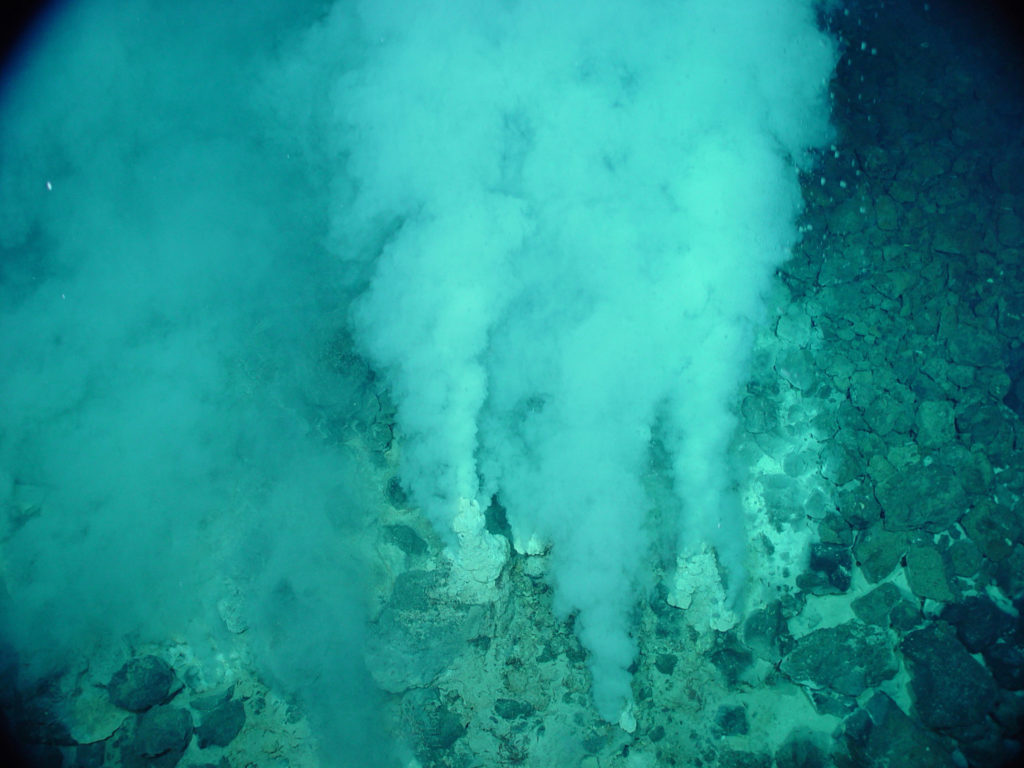Scientists recreated a deep-ocean environment where underwater volcanoes spew heat and chemicals to test whether or not biological molecules would form from non-biological ones.When scientists think of a very early Earth, they think of a hot, hostile place not too long after the birth of the solar system more than 4 billion years ago. This time in the Earth’s history is called the Hadean Eon, named after the ancient Greek God of the Underworld Hades, and would have been just about when the earliest oceans and moon formed. At these timescales of billions of years, this is a stark contrast from what we’d traditionally think of as ancient Earth. Many of us may imagine lush blue and green hues, which at this point hadn’t appeared yet. However, billions of years ago may have been when the building blocks of life first came together, way before plants and animals or even the first cells.
Without the ability to travel back in time, scientists have to study places and systems that chemically look like what we think that young and hot Earth may have been. It turns out that structures deep in the ocean called hydrothermal vents may be the closest thing we have to the early Earth environment. Hydrothermal vents are similar to underwater volcanoes and hot water geysers, where water and the rock of the Earth react to create heat and chemicals that spew out into the surrounding ocean. Scientists use these sites to study the chemical reactions that may have occurred during the formation of the early Earth.
Scientists at NASA’s Jet Propulsion Lab in California decided to take this one step further and actually recreate hydrothermal vents in the lab, using what they currently know about their activity.
To do this, the researchers built an elegant system using a simple tube connected to a sealed glass bottle with fluids that simulate early oceans. The tube allowed pyruvate and sodium hydroxide to flow and react with the simulated seawater, much the same way they would in real life. This was tested in a range of normal pH (around 7) to high pH (around 11) to see which the system preferred, if any, for the formation of key molecules. This same process is thought to have occured billions of years ago, but continues to this day in deep sea hydrothermal vents around the world.
At the end of the experiment, it turned out that the system readily produced alanine, one of the most common and important amino acids. The reaction took place over only three days, which is a short period of time. However, this suggests the possibility when given enough time, such as thousands or millions of years, these reactions would have been able to form even more of these essential building blocks of life. The experiment also made it clear that these molecules formed under specific pH and temperatures.
While the experiment was only carried out over 3 days, the possibilities become more interesting if one thinks of how long hydrothermal systems can be active for. Some venting systems have been going for hundreds of thousands of years, and there’s a possibility that they were more common billions of years ago. The answer to where life showed up and what it looked like may still be elusive, but what’s clear is that hydrothermal vents are one of the many likely places that we can consider to be “life reactors” where the most basic building blocks of life can form. Even more exciting is the overwhelming evidence that many of those chemical reactions are happening on other planets as well. By studying these systems on Earth, we are able to more deeply understand where to look for life beyond Earth.


